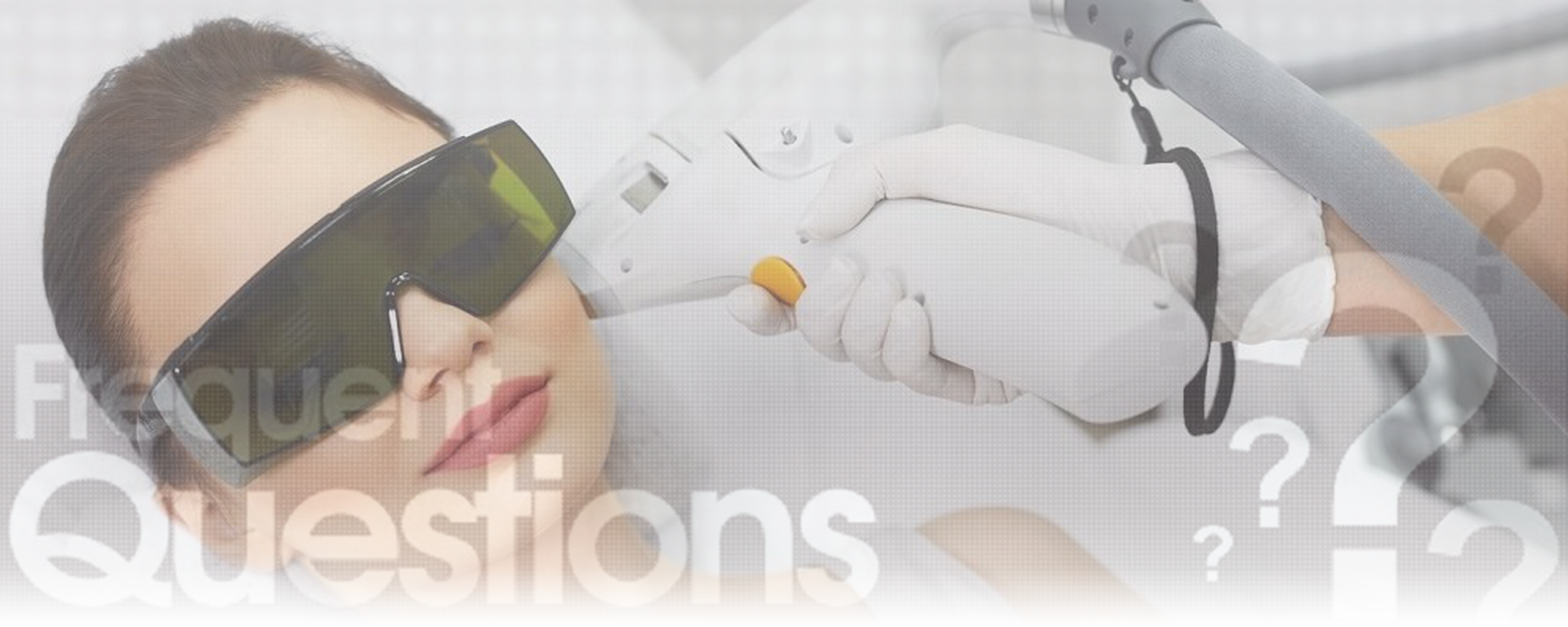
Aesthetic Procedure FAQ
Laser Treatment
1. How much pigment can be removed by laser treatment?
2. How to choose the medical treatment that suits me?
3. What is the difference between laser and IPL treatment? How many treatment sessions do I need?
Cosmetic Injection
4. Will cosmetic injections cause "frozen" face?
After Procedure
5. Do I need to avoid food after the aesthetic treatment?
6. When can I put on makeup after laser treatment?
7. Can I wash my face after laser treatment?
8. Can I wash my hair after scalp laser treatment?
9. If I have a surgical wound on my body, can I wet the wound?
Still has other questions?
You can press the inquiry button, let us know your situation thoroughly then give you reply.
Laser Treatment
1. How much pigment can be removed by laser treatment?
Therefore, we need to check your facial condition before giving advice. Some customers may not benefit from laser treatment due to their dry and fragile skin. We would recommend facial treatments that repair the skin.
All in all, we encourage customers to discuss their concerns with us. Our consultants will carefully check your situation and provide you with professional advice. So, please press the inquiry button to contact us, our professional team will analyze and provide you with exclusive opinions.
2. How to choose the medical treatment that suits me?
We will let each customer fill out a beauty questionnaire or undergo a physical examination, so that we can have a deeper understanding of his/her condition and skin characteristics.
Generally, customers with more sensitive skin are advised to undergo skin sedation and repair treatments. However, if you think your skin is more tolerant, we may recommend a higher energy focus treatment to solve your problem.
All in all, we encourage customers to discuss their concerns with us. Our consultants will carefully check your situation and provide you with exclusive advice. So, please press the inquiry button to contact us, our professional team will analyze and provide you with exclusive opinions.
3. What is the difference between laser and IPL treatment? How many treatment sessions do I need?
Re-Fine:
Re-Tight:
Re-Calm:
Re-Shine:
If you want to undergo treatment, you can discuss with our staff and choose the type of facial treatment that is suitable for a specific course of treatment.
For example, if you have some acne today, you can choose Re-Fine Facial. Next week, when you feel that your skin is more sensitive, you can choose Re-Calm Facial. You can also choose to join a doctor's treatment or higher energy treatment (laser pigment treatment, 4G HIFU (treatment mode) skin tightening, etc.).You can also choose to add the following methods:
Re-Bright Eye:
Re-Tight Neck:
HPL hair removal:
How often should I receive treatment?
Will the pigment recur after laser treatment?
Cosmetic injection
4. Will cosmetic injections cause "frozen" face?
Botox: The role of Botox is to paralyze the muscles that cause dynamic wrinkles. If Botox is injected into an inappropriate muscle, or injected into an inappropriate site, it may cause facial muscle paralysis. The customer may appear to have a "frozen" face.
Dermofiller-Hyaluronic acid: Although the use of a hard and strong hyaluronic acid dermal filler helps to provide the structural foundation of the skin. The use of crusty fillers on superficial skin can cause a "frozen face."
Based on experience, do not ask doctors to use excessive doses of the product, and doctors should also avoid placing the product on inappropriate skin layers. This can greatly reduce the "frozen face" situation.
All in all, we encourage customers to discuss their concerns with us. Our consultants will carefully check your situation and provide you with exclusive advice. So, please press the inquiry button to contact us, our professional team will analyze and provide you with exclusive opinions. Let us know what you want.
After procedure
5. Do I need to avoid food after the aesthetic treatment?
6. When can I put on makeup after laser treatment?
7. Can I wash my face after laser treatment?
Therefore, in our clinic, after treatment, our nurse will prepare a set of cleansers and creams for you to use after laser treatment. Some products are mild and anti-allergic, and some products have some additional functions (for example, help wound healing, prevent wound pigmentation, etc.). Please follow our nurse's instructions after laser treatment.
8. Can I wash my hair after scalp laser treatment?
9. If I have a surgical wound on my body, can I wet the wound?
In 2016, Taiwanese scholars also conducted similar clinical trials. They divided 444 patients who underwent thyroid, lung, small intestinal gas, face and limb surgery at the National Taiwan University School of Medicine from May 2013 to March 2014 and randomly divided them into two groups after surgery: bathing group (patients allowed Showering and bathing at 48 hours after surgery) and the non-bathing group (routine dressing and bandage the wound, no bathing). The results found that the infection rate of the bathing group was 1.8%, and the infection rate of the non-bathing group was 2.7%. There was no statistical difference in the infection rate between the two groups. The satisfaction of the patients in the bathing group was significantly higher than that of the non-bathing group, and the wound care fee of the bathing group was significantly lower than that of the non-bath group. Therefore, the research team believes that bathing 48 hours after surgery is not only safe, but also can improve patient satisfaction and reduce wound care costs. Bathing is better than not taking a bath.
Therefore, taking a bath 48 hours after skin surgery (stitching), or washing your hair after scalp skin surgery, is absolutely no problem. If you can wipe the wound and keep it dry after bathing, and use disinfectants and dressings according to our instructions, the chance of wound infection can be greatly reduced.